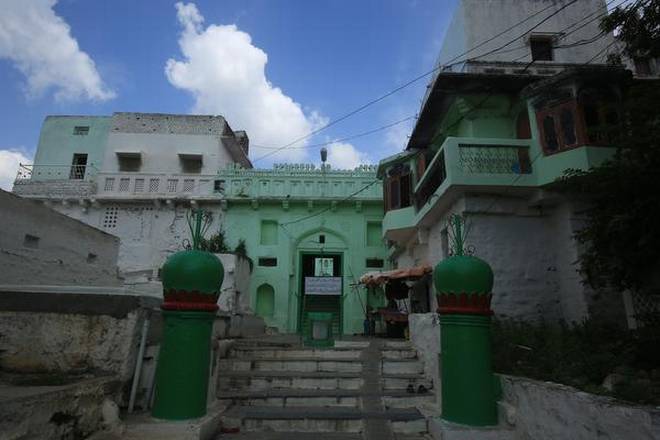Hyderabad, TELANGANA :

Mir Mahmood’s dargah comes alive during the Urs
It is an unmissable green dome that can be seen for miles around in the Rajendranagar area. Overlooking the massive Mir Alam Tank, built on the edge of the hillock now called MM Pahadi or Mir Mahmood ki Pahadi, is the dome of Sufi saint Mir Mahmood. “Mir Mahmood saheb came from Iraq. He came during the rule of Abdullah Qutb Shah and settled down here. When the king was constructing other buildings, Mir Mahmood paid double the wages to pregnant women and more people liked to work here. He lit a torch in the lake to carry on the building activity in the night,” says a caretaker.
According to historians, Syed Shah Emaduddin Mohammed hailed from Najf in present day Iraq and migrated to Bidar along with 50 other Sufis. Here, he came into the influence of Moulana Syed Shamsuddin Hussaini who inducted him to the Nimatullahi order and asked him to move to Hyderabad. He reached here during the reign of Abdullah Qutb Shah and stayed at the hillock overlooking the lake. The people started calling him Mir Mahmood Saheb. Within a few years, he started constructing his own tomb and on the other side of the lake, the new king Abul Hasan Tana Shah began constructing the dome of his spiritual master Shah Raju Qattal II. The workers and people knew that a miracle was taking place as the labourers were paid higher wages though the there was no known source of income for the Sufi who spent most his time in a trance like state. Now, the dome of Shah Raju is visible from Mir Mahmood’s dargah and Mir Mahmood’s dargah is visible from Shah Raju’s tomb in Misrigunj. But while Mir Mahmood’s dargah has a coat of green that shimmers in the sunlight, Shah Raju’s tomb is a dull grey requiring maintenance.
Mir Mahmood lived only on the hillock and never went to see any other place though the Charminar was very much visible from where he lived. He passed away two years after Hyderabad was conquered by Aurangzeb.
Most of the inscriptions, jali work and stucco work in the dargah have been erased over the years with layers of paint and repair work but the few remnants show that the tomb is a work of art. Inside the dome, there is a box with some prized relics, which is rarely opened. The real grave of the Sufi can be reached from the outside on the northern side at a lower level.
Just outside the entrance of the dargah is a small masjid where not more than five people can pray.
With land grants from kings and noblemen, the Dargah once had an estate of 600 acres. Now, much of it is occupied and the houses built on the southern slope have reached up to the hillock.
The Urs is celebrated on 13th Shaban which will be in April. During the Urs, the area comes alive as individuals and families jostle to touch the chadar and lay flowers on the grave of Mir Mahmood Saheb. Visitors who come to ask for dua and pray spend time in meditation in absolute calm. “People from across the region, Bidar and its surrounding areas, come here. Many of them stay here for three days participating in various activities and having food from the community kitchen. Even the lower levels of the hillock are occupied by visitors on those three days,” says Syed Afroze, who lives on the edge of the Mir Alam Tank.
The Mir Mahmood hillock is at an elevation of 530 metres above sea level. The Golconda fort is at an elevation of 539 metres. Even with construction of multi-storied housing and office blocks, most of the hillocks give a vantage point view of Golconda fort.
source: http://www.thehindu.com / The Hindu / Home> Life & Style / by Serish Nanisetti / November 13th, 2017








